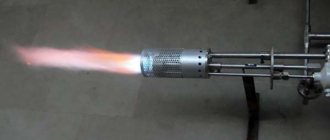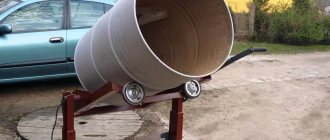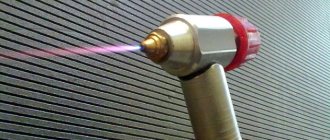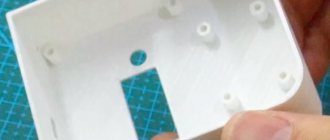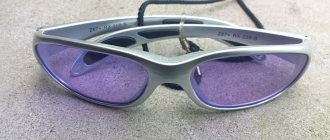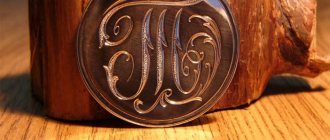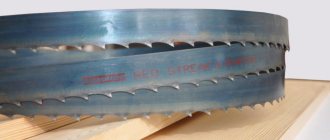Key material
For the manufacture of keyed joints, calibrated rolled metal is used.
The most commonly used steel is grade 45. It is a regular type of carbon steel, which is often used to produce high-strength parts. The steel is used in the form of a 1 m long bar. In some cases, grade 50 carbon steel can be used. It is necessary when increased strength properties of the resulting keys are required. Less commonly used are alloy steels, for example, grade 40x, which is characterized by a high hardness index achieved by heat treatment.
Steel blanks are processed using cutters, drilling machines, chopping machines, grinders and other tools. The machines used have a control unit that allows, using numerical programs, to produce a part with the required parameters.
The price of the resulting key is quite low, so purchasing the necessary part is quite easy. But in some cases, when there is an urgent need to obtain a key, you can make it yourself. Most often, such a need arises in agriculture, where during seasonal work breakdowns often occur that need to be repaired. At the same time, the nearest points of sale of the necessary parts are located at a distance of several tens of kilometers.
With a small amount of tools on hand and a blank made of the appropriate material, you can quickly make a temporary replacement. If the technical specifications are observed, the resulting part can fully replace the factory one, but it is best to purchase a key of the required strength and geometric parameters at the first opportunity. This is necessary to avoid premature wear of the mechanisms.
It is better to use different types of wood as a material; for a dowel, a softer material than the main one is suitable. This will protect the main structure from damage in case of increased load. It is easier to replace a key than a large structural unit.
To prevent moisture from penetrating into reinforced concrete structures, special dowels called waterstop are used. They are made from high quality rubber and PVC. This allows you to achieve the required degree of waterproofness and resistance to solutions of aggressive chemicals.
Making a key
Making a key
- a rather labor-intensive process, but only if you do it yourself.
The development of technology and the equipping of enterprises with modern machines allows for the fast, efficient production of high-quality products. At the same time, there are different types of keys
, each of which has a unique shape, depending on which
the key
can be produced in different ways.
In some cases, drilling machines, in some cases chopping machines, as well as grinding equipment and many other types of devices can be used to file the surfaces of a product. In principle, to make a key as
in a factory at home, however, computer numerical control equipment can do this most quickly and with better quality.
the key is mainly
, is structural carbon steel St45. The choice of this brand is due to its high physical and chemical characteristics. It is quite durable, resistant to many aggressive substances, and can withstand significant temperature changes and mechanical stress: shock, vibration, deformation. In addition, other steel grades are often used as the material for keys, for example, St20, St35, St50, 40X, A4. Of course, each of these varieties has its own personal resistance to various loads. As a rule, the quality of the selected material is determined based on its operating temperature range, resistance to chemicals and the degree of hardness of the steel alloy.
Rockwell hardness of the steels used
Actually, depending on the purpose of the key, a certain steel is selected for specific operating conditions. In general, the key material
it is called either
clean-drawn steel
or
calibrated strip
.
There are two main standards for its manufacture. The first is the domestic GOST 8787-68
.
The second is DIN 6880
. One way or another, this raw material is produced by cold or hot drawing and undergoes a special calibration: flat, volumetric or vertical. Calibration implies additional mechanical processing necessary to give the most accurate dimensions and obtain a better surface quality of the product. Carrying out these processing stages allows you to significantly reduce the costs of hardware enterprises, while obtaining high-quality products.
Thus, the production
of keys factories from calibrated blanks has become economically feasible. Considering that the price of a key of any type is very low, and the efficiency that a keyed connection provides is incredibly high, the use of these products over time has covered a fairly large number of different industrial production sectors. In particular, dowels are actively used both in agriculture, where they are installed on tractors, combines and all kinds of units, and in mechanical engineering, where they serve as connecting elements in many different mechanisms. In addition, various machine tools and other similar mechanisms are equipped with these products. The use of keys is due to several very important characteristics, including:
- Very reliable connection of different components and systems with the shaft
- Incredibly high level of fixation of this connection
- Ability to avoid possible rotation of parts
- Effective connection protection even in the event of failure
Despite the fact that there are different types of dowels , each of them is somewhat reminiscent of a wedge. Actually, because of this, these products received such a name. The fact is that, translated from Polish, a key just means a wedge, and its operating principle is the same - it firmly fixes the shaft and parts in relation to each other, preventing them from turning, but at the same time transmitting torque from the leading element to the driven ones. One of the main advantages that a keyed connection has is the ability to keep the shaft and other elements of the mechanism intact if the permissible torque limit is exceeded. The key is simply cut off at the demarcation point, dividing into two components. At the same time, it is very easy to replace, and you can even make it yourself.
Assembling keyed joints
Parallel keys must be replaced when:
- crushing of the side faces;
- weakening of the landing;
- collapse of the keyway.
Disassembly of a keyed connection can be done in various ways, depending on the design of the connection. To disassemble, make a threaded hole in the middle part of the key and screw a screw into it. When adjusting and assembling parallel keys, it is recommended to make a bevel on the surface of the key from the shaft side, to a length not exceeding the height of the key, and make a mark on the reverse side. An indispensable condition for the process of disassembling the key joint is maintaining the cleanliness and accuracy of the seats.
If the groove wall is slightly worn out, it is necessary to level the walls of the keyway until the correct shape is obtained and make a new key with an increased cross-section. Expansion of the keyway is allowed by an amount not exceeding 10-15% of the original size. When making a new key and repairing a keyway, processing should be carried out with the appropriate tool. Drilling of keyways must be done with a milling cutter.
Before assembly, the parts are cleaned and the fit dimensions are checked, the presence of nicks, burrs and other defects on the mating surfaces. Measuring the depth of the grooves, the height and correct installation of the keys is carried out using probes, templates, dial-type movement indicators and special stands.
The key is seated in the shaft groove with light blows of a copper hammer (or a soft metal hammer), under a press or using clamps. Skewing the key and cutting into the body of the groove is not allowed. The absence of lateral clearance between the key and the groove is checked with a feeler gauge, then the covering part (wheel, pulley) is installed and the presence of radial clearance is checked.
When assembling wedge keys, it is necessary to ensure that the key fits tightly to the bottom of the groove of the shaft and bushing and has gaps along its side walls. The upper edge of the wedge keys must be made with a slope along the length of 1:100. The slopes on the working surface of the key and in the groove of the bushing must coincide, otherwise the part will sit on the shaft with a skew. The accuracy of the key fit is checked with a feeler gauge on both sides of the bushing. During assembly, the grooves of the shaft or the surface of the key are sawed or scraped to prevent distortion and displacement. In the assembled connection, the head of the taper key should not reach the end of the hub by an amount equal to the height of the key. To prevent the wedge and tangential keys from falling out (when they are loosened), stops are installed on the screws at the heads. It should be noted the uncertainty of the forces that arise when pressing the wedge keys. This may damage the hubs of the male parts.
Dowels with a cross-sectional size of more than 28×16 mm must be checked for paint on the seats until five or more prints are obtained per square centimeter of surface. Before installing the key, the key and keyway must be cleaned and oiled. It is not allowed to install any pads in all types of keyed joints to achieve a tight fit of the keys.
Segmental keys are less susceptible to misalignment and do not require manual fitting (since the keyway is produced with a cutter corresponding to the size of the key); the groove for the segment key is deeper, which weakens the cross-section of the shaft.
In the assembled connection between the upper edge of the parallel key and the base of the hub groove (), the radial clearance must correspond to those given in the data. In connections with a wedge key (), the lateral clearance between the groove and the key should not exceed the values specified in.
Figure 4.1 – Gap when installing parallel keys
| Shaft diameter, mm | Radial clearance, mm |
| from 25 to 90 | 0,3 |
| from 90 to 170 | 0,4 |
| over 170 | 0,5 |
Figure 4.2 – Gaps when installing wedge keys
Table 4.2 – Lateral clearance values for wedge keys depending on the key size
| Normal dimensions of keys, mm | Side clearance, mm |
| b = 12…18; h = 5…11 | 0,35 |
| b = 20...28; h = 8…16 | 0,4 |
| b = 32…50; h = 11…28 | 0,5 |
| b = 60...100; h = 32…50 | 0,6 |
The guide keys are installed with additional fastening in the groove with screws; a looser fit is made in the groove of the moving parts.
Key and key connection
A keyed connection is a type of connection consisting of a key on the shaft and a hub. A key is a part that connects nodes by installing them in grooves. Its main function is to transmit torque between nodes. There is a certain standardization of their varieties. The key has special grooves cut by milling.
Application
The main application of keyed connections is mounting on a shaft using a grooved connection. In most cases, the keyway resembles a wedge. This type of connection of parts allows the shaft and hub not to rotate relative to each other’s axis. The fixed position of the hub to the shaft with a key allows for high efficiency when transmitting force.
Most often, keyed connections can be found in mechanical engineering, during the construction of machine tools. It is often used in the production of cars and other mechanisms, where increased reliability of fixing machine parts is required. High reliability is achieved thanks to the function of the shaft safety unit with keyway.
The key acts as a fuse in cases where the maximum torque level is exceeded. In such cases, the key is sheared, absorbing the excessive load and removing it from the shaft and hub.
Due to its properties, it has become widespread in mechanical engineering; it is characterized by high efficiency, ease of manufacture and installation, and low cost. Such characteristics are especially important in industrial production, especially in agriculture. At the height of the season, there are often cases of breakdowns of individual components that need to be replaced as quickly as possible. Most often found in baler units.
Considering all of the above, the main positions for which a key is needed are highlighted:
- Ensuring the safety of connected nodes under increased loads.
- Achieving a high degree of fixation of individual elements of a mechanical assembly.
- Performs the function of preventing rotation of the unit and hub.
- The reliability of such a connection exceeds the reliability of analogues when fixing the shaft with parts.
In general, you can find a keyed connection in almost any complex mechanism, which is due to its technical characteristics.
Types of keys
The main types of keys are divided into two types: stressed and unstressed. Among which are the following types of keys:
- Wedges. A special type that differs in the angle of inclination of the upper edge. In general, the division into types is based on the classification of key joints. It is installed in the groove using physical force, using the impact method. The use of this type of connection allows you to achieve the required voltage. The cut wedge, being in the groove, expands it from the inside. Due to the pressing force, the shaft and hub rotate together. It is used quite rarely, since its use requires individual adjustment. This can be considered a disadvantage for mass production of mechanisms. The main purpose is to use it in low-speed gears and fixed connection units. Among the wedge keys there are:
- mortise;
- on a flat;
- friction;
- without head and with head.
- Segmental. They are produced in the form of a segment plate driven into a groove. Produced by milling. They are widely used in production, as they are easy to manufacture, do not require special precision when cutting and are easy to install. It differs in installation in a deeper groove, in comparison with analogues. A deep groove is not suitable for heavy loads, as it significantly reduces the strength of the shaft, so it is used for small torques. Several keys can be installed on long hubs, since they have a fixed length. Perform a safety function against shearing and crushing.
- Prismatic. They are distinguished by parallel edges that are installed in a groove and fix the hub. In such cases, the working faces are the lateral ones. They are a non-stressed type of keyed joints, so there is a possibility of corrosion at the joint. To avoid corrosion, the coupling and shaft are connected with interference. The ends are usually produced with rounded or flat ends. For a rounded type, the working surface is considered to be the length of the straight edges. The groove is cut using a cutter. The force is transmitted by pressing the surface of the groove onto the key, which transmits torque to the hub groove. This type of parallel key connection is often used for moving connections, so additional fastening with screws is used. Like many other types, it functions as a fuse during crushing and shearing.
- Cylindrical. The pins in such keys are made in the form of cylinders. I work in tension with a hole at the end of the shaft, which is drilled to fit the corresponding key sizes. Used in cases where the hub is installed at the end of a shaft. Requires a special approach to the installation of keyed connections. Allows work on shear and crushing. Therefore, the choice of key is made based on the crushing strength.
How to make a dowel
But how to make a dowel from improvised materials? After all, factory products are made on high-precision equipment. Many enterprises for the manufacture of keys use drilling, grinding, grinding and many other types of CNC machines, the presence of which allows them to achieve the most accurate tolerances. It's actually not that difficult! Of course, it will not be possible to make a key as it came from the factory - one way or another, it will probably have slight deviations. However, for an emergency replacement, such a solution is fully suitable. In addition, for these purposes you can hire an experienced craftsman who already knows how to make a key. You will only need to provide him with payment, the required dimensions and raw materials for the blanks. True, many craftsmen always have their own keyed steel for such cases.
Since the keyed connection as a connecting link can have a variety of types of keys, when manufacturing the product it will be very important to take into account both what material can best withstand the given loads and what its configuration should be. Thus, it is possible to make a key exactly like the previous one, but use the most high-strength alloys in order to significantly extend its life and avoid premature failures
To make a key, you will need clean-drawn steel with the required dimensions: width, thickness, length
Please note that the bars can be rectangular or square. In this case, the length of the workpiece can vary from several meters to several centimeters
In addition to this, you will also need to prepare:
Please note - making a key requires compliance with safety regulations! First, you must make sure that the keyed steel is firmly secured in the vise. The degree of reliability of fixation must be checked periodically as all stages of work progress.
Secondly, under no circumstances should you use files that already have cracks and chips on the handle. Also, files without handles cannot be used. Thirdly, when filing workpieces with sharp edges, it is strictly forbidden to press your fingers under the file. In addition, it is strictly forbidden to remove chip dust with bare hands without gloves, since you can cut the skin or drive in a metal splinter. In addition, dust should not be blown off with your mouth, as it can easily get into the respiratory tract.
We make the keyway ourselves
A keyway is installed in parts to ensure their connection with others that transmit forces to them. They are usually performed by milling on milling machines using special cutters. The procedure for making a keyway is very important. The quality, reliability of the connection of parts, and the durability of the assembly depend on the correctness and accuracy of its implementation.
Keyways are different: open (with exit); end-to-end; closed. They are made for different types of keys - most often they are wedge, segment, prismatic. The accuracy of the grooves must be high and is determined: by length - 8th accuracy class; depth – 5m; width - 2, 3 m. Accuracy requirements must be strictly met.
Key material
For the manufacture of keyed joints, calibrated rolled metal is used. The most commonly used steel is grade 45. It is a regular type of carbon steel, which is often used to produce high-strength parts. The steel is used in the form of a 1 m long bar.
In some cases, carbon steel grade 50 can be used. It is necessary when increased strength properties of the resulting keys are required. Less commonly used are alloy steels, for example, grade 40x, which is characterized by a high hardness index achieved by heat treatment.
Steel blanks are processed using cutters, drilling machines, chopping machines, grinders and other tools. The machines used have a control unit that allows, using numerical programs, to produce a part with the required parameters.
The price of the resulting key is quite low, so purchasing the necessary part is quite easy. But in some cases, when there is an urgent need to obtain a key, you can make it yourself. Most often, such a need arises in agriculture, where during seasonal work breakdowns often occur that need to be repaired. At the same time, the nearest points of sale of the necessary parts are located at a distance of several tens of kilometers.
With a small amount of tools on hand and a blank made of the appropriate material, you can quickly make a temporary replacement. If the technical specifications are observed, the resulting part can fully replace the factory one, but it is best to purchase a key of the required strength and geometric parameters at the first opportunity. This is necessary to avoid premature wear of the mechanisms.
It is better to use different types of wood as a material; for a dowel, a softer material than the main one is suitable. This will protect the main structure from damage in case of increased load. It is easier to replace a key than a large structural unit.
To prevent moisture from penetrating into reinforced concrete structures, special dowels called waterstop are used. They are made from high quality rubber and PVC. This allows you to achieve the required degree of waterproofness and resistance to solutions of aggressive chemicals.
Key. Keyway. Types, sizes and maximum deviations.
Parallel keys according to GOST 23360-78.
Fig. 1. Basic designations of parallel keys and keyways.
Table 1. Dimensions and maximum deviations of parallel keys and keyways according to GOST 23360-78.
| Shaft diameter d | Key section bхh | Keyway | Length l mm | ||||||||||
| Width b | Depth | Rounding radius r or chamfer s1 x 45° | |||||||||||
| Free connection | Nominal connection | Tight connection | Shaft t1 | Bushing t2 | |||||||||
| Shaft (H9) | Bushing (D10) | Shaft (N9) | Bushing (JS9) | Shaft and bushing (P9) | Nom.. | Nom. | Prev. off | no more | no less | ||||
| From 12 to 17 » 17 » 22 | 5×5 6×6 | +0,030 | +0,078 +0,030 | 0 -0,030 | ±0,015 | -0,012 -0,042 | 3,0 3,5 | +0,1 | 2,3 2,8 | +0,1 | 0,25 0,25 | 0,16 0,16 | 10-56 14-70 |
| St. 22 to 30 » 30 » 38 | 8×7 | +0,036 | +0,098 +0,040 | 0 -0,036 | ±0,018 | -0,015 -0,051 | 4,0 5,0 | +0,2 | 3,3 3,3 | +0,2 | 0,25 0,4 | 0,16 0,25 | 18-90 |
| 10×8 | 22-110 | ||||||||||||
| St. 38 to 44 » 44 » 50 » 50 » 58 » 58 » 65 | 12×8 | +0,043 | +0,120 +0,050 | 0 -0,043 | ±0,021 | -0,018 -0,061 | 5,0 | 3,3 | 0,4 | 0,25 | 28-140 | ||
| 14×9 | 5,5 | 3,8 | 36-160 | ||||||||||
| 16×10 | 6,0 | 4,3 | 45-180 | ||||||||||
| 18×11 | 7,0 | 4,4 | 50-200 | ||||||||||
| St. 65 to 75 » 75 » 85 » 85 » 95 | 20×12 | +0,052 | +0,149 +0,065 | 0 -0,052 | ±0,026 | -0,022 -0,074 | 7,5 | 4,9 | 0,6 | 0,4 | 56-220 | ||
| 22×14 | 9,0 | 5,4 | 63-250 | ||||||||||
| 24×14 | 9,0 | 5,4 | 70-280 |
Table 2. Limit deviations of dimensions (d + t1) and (d + t2).
| Height of keys | Maximum dimensional deviation | |
| d+t1 | d+t2 | |
| From 2 to 6 | 0 -0,1 | +0,1 0 |
| St. 6 to 18 | 0 -0,2 | +0,2 0 |
| St. 18 to 50 | 0 -0,3 | +0,3 0 |
Parallel keys with mounting on the shaft in accordance with GOST 8790-79.
Fig. 2. Basic designations of parallel keys with mounting on the shaft and keyways.
Table 3. Dimensions of parallel keys with mounting on the shaft according to GOST 8790-79.
| Width b (h9) | Height h (h11) | Rounding radius r or chamfer s1 x 45° | Diameter d0 | Length l2 | Length l (h14) | Screws according to GOST 1491-80 | ||
| no less | no more | from | before | |||||
| 8 | 7 | 0 25 | 0,40 | M3 | 7 | 25 | 90 | M3×8 |
| 10 | 8 | 0,40 | 0,60 | 8 | 25 | 110 | M3×10 | |
| 12 | M4 | 10 | 28 | 140 | M4×10 | |||
| 14 | 9 | M5 | 36 | 160 | M5×12 | |||
| 16 | 10 | M6 | 11 | 45 | 180 | M6×14 | ||
| 18 | 11 | 50 | 200 | |||||
| 20 | 12 | 0,60 | 0,80 | 56 | 220 | |||
| 22 | 14 | M8 | 16 | 63 | 250 | M8×20 | ||
| 25 | 70 | 280 | ||||||
| 28 | 16 | 80 | 320 | |||||
| 32 | 18 | M10 | 18 | 90 | 360 | M10×25 | ||
| 36 | 20 | 1,00 | 1,20 | 100 | 400 | |||
| 40 | 22 | M12 | 22 | 100 | 400 | M12×30 | ||
| 45 | 25 | 125 | 450 |
Segment keys according to GOST 8786-68.
Fig. 3. Basic designations of segmental keys and keyways.
Table 4. Dimensions and maximum deviations of segment keys and keyways according to GOST 8786-68.
| Shaft diameter d | Key dimensions b×h×D | Keyway | |||||||
| Transmitting torque | Fixing elements | Width b | Depth | Rounding radius r or chamfer s1 x 45° | |||||
| Shaft t1 | Bushing t2 | ||||||||
| Nom. | Prev. off | Nom. | Prev. off | no less | no more | ||||
| From 3 to 4 St. 4 » 5 | From 3 to 4 St. 4 » 6 | 1×1,4×4 1,5×2,6×7 | 1,0 1,5 | 1,0 2,0 | +0,1 0 | 0,6 0,8 | +0,1 | 0,08 | 0,16 |
| St. 5 » 6 » 6 » 7 | St. 6 » 8 » 8 » 10 | 2×2,6×7 2×3,7×10 | 2,0 | 1,8 2,9 | 1,0 1,0 | ||||
| St. 7 to 8 | St. 10 to 12 | 2,5×3,7×10 | 2,5 | 2,7 | 1,2 | ||||
| St. 8 to 10 » 10 » 12 | St. 12 to 15 » 15 » 18 | 3×5×13 3×6,5×16 | 3,0 | 3,8 5,3 | +0,2 0 | 1,4 1,4 | |||
| St. 12 to 14 » 14 » 16 | St. 18 to 20 » 20 » 22 | 4×6,5×16 4×7,5×19 | 4,0 | 5,0 6,0 | 1,8 1,8 | 0,16 | 0,25 | ||
| St. 16 to 18 » 18 » 20 | St. 22 to 25 » 25 » 28 | 5×6,5×16 5×7,5×19 | 5,0 | 4,5 5,5 | 2,3 2,3 | ||||
| St. 20 to 22 | St. 28 to 32 | 5×9×22 | 7,0 | +0,3 | 2,3 | ||||
| St. 22 to 25 » 25 » 28 | St. 32 to 36 » 36 » 40 | 6×9×22 6×10×25 | 6,0 | 6,5 7,5 | 2,8 2,8 | ||||
| St. 28 to 32 | St. 40 | 8×11×28 | 8,0 | 8,0 | 3,3 | +0,2 | 0,25 | 0,40 | |
| St. 32 to 38 | St. 40 | 10×13×32 | 10,0 | 10,0 | 3,3 |
Wedge keys according to GOST 24068-80.
Fig. 4. Basic designations of wedge keys and keyways.
Table 5.1 Dimensions and maximum deviations of wedge keys and keyways according to GOST 24068-80.
| Width b (h9) | Height h (h11) | Rounding radius r or chamfer s1 x 45° | Length l (h14) | Key head height | ||
| no less* | no more | from | before | |||
| 2 | 2 | 0,16 | 0,25 | 6 | 20 | — |
| 3 | 3 | 6 | 36 | — | ||
| 4 | 4 | 8 | 45 | 7 | ||
| 5 | 5 | 0,25 | 0,40 | 10 | 56 | 8 |
| 6 | 6 | 14 | 70 | 10 | ||
| 8 | 7 | 18 | 90 | 11 | ||
| 10 | 8 | 0,40 | 0,60 | 22 | 110 | 12 |
| 12 | 8 | 28 | 140 | 12 | ||
| 14 | 9 | 36 | 160 | 14 | ||
| 16 | 10 | 45 | 180 | 16 | ||
| 18 | 11 | 50 | 200 | 18 | ||
| 20 | 12 | 0,60 | 0,80 | 56 | 220 | 20 |
| 22 | 14 | 63 | 250 | 22 | ||
| 25 | 14 | 70 | 280 | 22 | ||
| 28 | 16 | 80 | 320 | 25 | ||
| 32 | 18 | 90 | 360 | 28 | ||
| 36 | 20 | 1,00 | 1,20 | 100 | 400 | 32 |
| 40 | 22 | 100 | 400 | 36 | ||
| 45 | 25 | 110 | 450 | 40 | ||
| 50 | 28 | 125 | 500 | 45 | ||
| 56 | 32 | 1,60 | 2,00 | 140 | 500 | 50 |
| 63 | 32 | 160 | 500 | 50 | ||
| 70 | 36 | 180 | 500 | 56 | ||
| 80 | 40 | 2,50 | 3,00 | 200 | 500 | 63 |
| 90 | 45 | 220 | 500 | 70 | ||
| 100 | 50 | 250 | 500 | 80 |
Continuation.
Table 5.2 Dimensions and maximum deviations of wedge keys and keyways according to GOST 24068-80.
| Shaft diameter | Key section bхh | Keyway | ||||||
| Width b | Depth | Rounding radius r or chamfer s1 x 45° | ||||||
| Shaft and sleeve (D10) | Shaft t1 | Bushing t2 | ||||||
| Nom. | Prev. off | Nom. | Prev. off | no less | no more | |||
| From 6 to 8 | 2x2 | 2 | 1,2 | +0,1 0 | 0,5 | +0,1 0 | 0,08 | 0,16 |
| St. 8 to 10 | 3x3 | 3 | 1,8 | 0,9 | ||||
| St. 10 to 12 | 4x4 | 4 | 2,5 | 1,2 | ||||
| St. 12 to 17 | 5x5 | 5 | 3,0 | 1,7 | 0,16 | 0,25 | ||
| St. 17 to 22 | 6x6 | 6 | 3,5 | 2,2 | ||||
| St. 22 to 30 | 8x7 | 8 | 4,0 | +0,2 0 | 2,4 | +0,2 0 | ||
| St. 30 to 38 | 10x8 | 10 | 5,0 | 2,4 | 0,25 | 0,40 | ||
| St. 38 to 44 | 12x8 | 12 | 5,0 | 2,4 | ||||
| St. 44 to 50 | 14x9 | 14 | 5,5 | 2,9 | ||||
| St. 50 to 58 | 16x10 | 16 | 6 | 3,4 | ||||
| St. 58 to 65 | 18x11 | 18 | 7 | 3,4 | ||||
| St. 65 to 75 | 20x12 | 20 | 7,5 | 3,9 | 0,40 | 0,60 | ||
| St. 75 to 85 | 22x14 | 22 | 9 | 4,4 | ||||
| St. 85 to 95 | 25x14 | 25 | 9 | 4,4 | ||||
| St. 95 to 110 | 28x16 | 28 | 10 | 5,4 | ||||
| St. 110 to 130 | 32x18 | 32 | 11 | 6,4 | ||||
| St. 130 to 150 | 36x20 | 36 | 12 | +0,3 0 | 7,1 | +0,3 0 | 0,70 | 1,00 |
| St. 150 to 170 | 40x22 | 40 | 13 | 8,1 | ||||
| St. 170 to 200 | 45x25 | 45 | 15 | 9,1 | ||||
| St. 200 to 230 | 50x28 | 50 | 17 | 10,1 | ||||
| St. 230 to 260 | 56x32 | 56 | 20 | 11,1 | 1,20 | 1,60 | ||
| St. 260 to 290 | 63x32 | 63 | 20 | 11,1 | ||||
| St. 290 to 330 | 70x36 | 70 | 22 | 13,1 | ||||
| St. 330 to 380 | 80x40 | 80 | 25 | 14,1 | 2,00 | 2,50 | ||
| St. 380 to 440 | 90x45 | 90 | 28 | 16,1 | ||||
| St. 440 to 500 | 100x50 | 100 | 31 | 18,1 |
Varieties
The main criterion for choosing a parallel key is what type of connections it is intended for.
In the event that the connection is stationary, embedded parallel keys are used. In moving joints, guides or sliding feather keys are used. The use of guides is relevant when the hub moves along the longitudinal axis with the shaft, while it slides along the groove itself. The sliding type involves rigid fastening into a groove and movement along it.
In production, the production of keys of all types must be carried out in accordance with the relevant GOSTs. These documents contain recommended dimensions for products in accordance with standard shaft sizes.
In cases where the shaft or spindle has a non-standard diameter, detailed calculations of tolerances and fits for the groove should be carried out.
Types of keys
Modern production provides over 20 different types of items. But among them the following most used types in mechanical engineering are distinguished:
- Wedge - used on end installations and are a type of driving keys. This keyed connection is used for shaft diameters of 100 mm or more. Currently they are extremely rare. The reason for this lies in the high probability of overtightening of the unit and displacement of the alignment of the hub and shaft under the influence of one-sided force. It is also difficult to remove the keys.
- Prismatic. The groove dimensions are regulated by GOST 23360-78. They are most in demand in industry due to the optimal ratio of strength and manufacturability. There are two types of them: mortise and embedded. Mortise keys are installed with an interference fit, and embedded keys with a small gap.
- Guide keys. They are distinguished from prismatic ones by the presence of holes for fasteners on the shaft. In addition to transmitting rotation, they serve as an element for guiding parts.
- Segmental keys stand out from the rest due to their increased technology for cutting grooves. The grooves are made using disc cutters, which provides them with greater precision and productivity. The fastening of keys to shafts is also more stable due to deeper cutting into their surface. However, at the same time, all these advantages cause a significant weakening of the shaft. This circumstance, along with the short length of the groove, leads to the appearance of increased stresses, which limit the use of keys to lightly loaded products.
It is worth noting that keyways are made by milling and broaching. The most common way to produce them is with a finger cutter, since this method provides relatively favorable stress distribution and acceptable manufacturability.
Designations on the drawings
In the drawings, the designation of parallel keys is based on the GOST regulatory document. They are divided into keyways: high, normal height and guides. Their working faces are the lateral ones.
In the assembly drawing, the designation is made taking into account the shaft diameter, torque, cross-section and length.
For example:
Key 3–20Х12Х120 GOST 23360-78; Where 3 is the design, 20X12 is the section, 120 is the length.
Download GOST 23360-78
The designation of other types of keys in the images is carried out in the same way, based on the corresponding GOSTs developed for each individual model. The specified designation must clearly characterize the part, which is very important for obtaining a reliable connection. After all, even the slightest gap can cause rapid wear of working units and loss of efficiency during operation.
§ 33. Drawings of key and pin connections
GOST 29175-91
33.1. Image of keyed joints. One of the most common detachable connections of parts is keyed (see Fig. 209).
The key is designed to connect the shaft with the part mounted on it: a pulley, a gear wheel, a flywheel, etc.
In order for the pulley to rotate with the shaft, grooves (keyways) are cut into them, into which the key is placed.
Rice. 222. Keyed connection details
Figure 222 shows visual images of the keyed connection parts. The arrows show how they connect. In the visual illustration of a parallel key connection (Fig. 223), the bushing is shown in section so that the key is clearly visible. There are numbers on the shelves of leader lines. They correspond to the numbers assigned to the parts.
Rice. 223. Connection with a key
Drawings of the parts included in the connection are shown in Figure 224, and the assembly drawing is shown in Figure 225. Note that in the assembly drawing the key is shown uncut. As you know, this is done in the case when the cutting plane passes along a solid (non-hollow) part.
Rice. 224. Drawings of keyed connection parts
The drawing of parallel key connections shows a small gap - the gap between the top plane of the key and the bottom of the groove in the bushing.
Rice. 225. Assembly drawing of a keyed connection: 1 - shaft; 2 bushings; 3 - key
Each key on the assembly drawing has a symbol. For example, the entry Key 12x8x60 means that the parallel key has the following dimensions: width 12 mm, height 8 mm, length 60 mm. Recording key segm. 8×15 is read as follows: segmental key, thickness 8 mm, height 15 mm. Since the dimensions of the keys are standardized, therefore, the shape and dimensions of the keyways (grooves) on the shaft and in the bushing are standardized. These dimensions are selected depending on the diameter of the shaft included in the connection.
Table 4 (extracts from GOST 23360-78) shows the diameter D of the shaft, the corresponding dimensions of the keys (width b, height h) and the depth of the keyways (t for the shaft, t1 for the bushing).
Table 4. Prismatic keys (in mm)
For example, the shaft diameter is 18 mm. Using the table, we find the dimensions of the key. Its width b = 6 mm, height h = 6 mm. The length of the key l is chosen within the required limits. Let's take it equal to 30 mm. The depth of the groove on the shaft is t = 3.5 mm, the depth of the groove in the bushing is t1 = 2.8 mm.
Rice. 226. Reading drawing
- Using Table 4, write down the dimensions of the key and slots of the parallel key connection if the shaft diameter is 42 mm.
- Figure 226 shows the connection of the lever (part 1) with the shaft (part 2) using a key (part 3). Answer the questions: What do the two concentric circles indicated by the number 1 (circled) mean?
- What do the two horizontal lines mean, between which the arrow of the number 3 (in the circle) passes?
- What parts does the surface marked with number 2 (circled) belong to?
- Why are the surfaces marked 4 and 5 (in circles) not shaded? What details do they refer to?
- What part does the surface marked with number 6 (circled) belong to?
33.2. Picture of pin connections. Figure 209 shows a pin H that prevents the parts fastened with a screw from moving.
Drawings of cylindrical and conical pins are shown in Figure 227.
Rice. 227. Pin drawings
Figure 228 shows a visual representation, and Figure 229 shows an assembly drawing of a pin connection. The pin (item 3) is located in a hole drilled simultaneously in the housing (item 1) and in the shaft (item 2).
Rice. 228. Visual representation of a pin connection
Note that in assembly drawings, sectional pins are shown, like other non-hollow parts, to be uncut if the cutting plane runs along their axis.
Rice. 229. Assembly drawing of connection
The pin designation includes its name, dimensions and standard number, for example: Cylindrical pin 5×30. This means that the cylindrical pin has the following dimensions: diameter 5 mm, length 30 mm.
The entry Conical pin 10x70 means that the conical pin has a smaller diameter of 10 mm and a length of 70 mm.
A pin connection is sometimes used to prevent longitudinal movement of parts connected by a key (Fig. 230).
Rice. 230. Reading drawing
Look at the drawing (Fig. 230) and answer the questions:
- How many parts are included in the connection?
- Why are parts 3 and 4 not shaded?
- What are the dimensions of part 3, if it has the following designation: “Key 14x9x35”. Complete its drawing and technical drawing (see Fig. 224).
How to grind a pulley keyway at home
I bought a Chinese engine for Mole, and its shaft turned out to be 20 mm in diameter (19 mm is more common). I searched for a pulley for a long time, but found only one for 19 mm. The hole was turned out for me by 20 mm, but at the same time, naturally, the groove for the key became smaller.
The task is how to evenly deepen (by 2 millimeters) the keyway (the pulley itself is 60 mm long) at home? I tried it with a needle file - it was a chore, and I was unlikely to achieve uniform removal.
There is an idea to collect a bag of metal files and tighten it tightly, i.e. make something similar to a rough file.
It’s easier to sharpen the key. Or use a file to enlarge the key groove. When I was young, I raked out the spline groove in the pulley and shaft from scratch with a file.
You can also make round dowels, drill a hole and drive a suitable rod into it.
If you grind down the key, the risk of it cutting off will increase.
You can do this with a drill or with a Bulgarian, if you put a “remnant” of the disc. And saws are like a file - you’ll get dirty.
IT'S SNOWING wrote: You can do this with a drill or with a Bulgarian, if you put a “remnant” of the disc.
The diameter of the hole is 20 mm, how can you get there with an angle grinder? In principle, you can deepen the groove on the shaft, but I’m afraid of damaging the shaft (and it will be more expensive than the pulley). If using a drill, then which attachment? (I’ll find a drill, but I don’t know what to grind with).
. And saws are like a file - you’ll get dirty.
What if the files are packed in a package the width of the entire groove? For example, we fasten this bag (teeth up) in a vice, put a pulley “on top” on the protruding part of the bag and push it back and forth.
You should probably use a cutter according to the width of the hole (by the way, how much is there? About 1 cm?), but first you can cut through the edges with a jigsaw, and then remove the protrusion little by little?
The groove is 5 mm wide. It is unlikely that you will be able to press the jigsaw file evenly along the entire length of the groove, although as an option you can try it on something.
DIN 6885 B/P Prismatic steel key
- Modifications
- Description
- Specifications
- Your discounts
Parallel keys DIN 6885 are produced in different variations. They can be square, oval, with rounded corners on only one side, with or without holes, as well as with cuts in one of the corners.
The key is manufactured according to the German standard DIN 6885, as well as according to the Russian standard GOST 23360-78 and the international standard ISO 773. The DIN 6885 key is made of steel, by default it does not have an additional coating, and also does not have increased strength classes.
Installing a key in any mechanism requires care and experience in installing such products. To correctly install the key in the mechanism, you need to align the part and the shaft so that their grooves coincide. A key according to DIN 6885 secures the flywheel/gear/pulley mounted on it to the shaft. This shaft is often designed for thousands of revolutions per minute.
The unit in which the shaft rotates at such a huge speed most often works continuously for years. And all this time, the parallel key experiences shear forces.
Purpose
The key DIN 6885 is prismatic, or otherwise it is also called “keyway”. DIN 6885 keys are very often used in manufacturing and industrial applications.
Technical characteristics of the key DIN 6885 (part 1):
| Key parameters | Key width, B (h9) | ||||||||||||||||
| 2 | 3 | 4 | 5 | 6 | 8 | 10 | 12 | 14 | 16 | 18 | 20 | 22 | 25 | 28 | 32 | ||
| Height, H (h11) | 2 | 3 | 4 | 5 | 6 | 7 | 8 | 8 | 9 | 10 | 11 | 12 | 14 | 14 | 16 | 18 | |
| Radius | min. | 0,16 | 0,25 | 0,4 | 0,6 | ||||||||||||
| Max. | 0,25 | 0,4 | 0,6 | 0,8 | |||||||||||||
| Nominal length L | min. | 6 | 6 | 8 | 10 | 14 | 18 | 22 | 28 | 36 | 45 | 50 | 56 | 63 | 70 | 80 | 90 |
| Max. | 20 | 36 | 45 | 56 | 70 | 90 | 110 | 140 | 160 | 180 | 200 | 220 | 250 | 280 | 320 | 360 |
Technical characteristics of the key DIN 6885 (part 2):
| Key parameters | Key width, B (h9) | ||||||||||
| 36 | 40 | 45 | 50 | 56 | 63 | 70 | 80 | 90 | 100 | ||
| Height, H (h11) | 20 | 22 | 25 | 28 | 32 | 32 | 36 | 40 | 45 | 50 | |
| Radius | min. | 1 | 1,6 | 2,5 | |||||||
| Max. | 1,2 | 2 | 3 | ||||||||
| Nominal length L | min. | 100 | 110 | 125 | 140 | 160 | 180 | 200 | 220 | 250 | 280 |
| Max. | 400 | 400 | 400 | 400 | 400 | 400 | 400 | 400 | 400 |
| Order price | Discount amount for each order |
| 5,000 - 20,000 rubles | Basic wholesale price |
| 20,000 - 70,000 rubles | 5% discount |
| 70,000 - 200,000 rubles | 10% discount |
| over 200,000 rubles | Discount up to 25% |
If YOU are a large wholesale supply organization, there are special conditions for YOU, notify our managers and receive personal discounts!
Flat inner retaining ring for holes
Back
Varieties
The main criterion for choosing a parallel key is what type of connections it is intended for.
In the event that the connection is stationary, embedded parallel keys are used. In moving joints, guides or sliding feather keys are used. The use of guides is relevant when the hub moves along the longitudinal axis with the shaft, while it slides along the groove itself. The sliding type involves rigid fastening into a groove and movement along it.
In production, the production of keys of all types must be carried out in accordance with the relevant GOSTs. These documents contain recommended dimensions for products in accordance with standard shaft sizes.
In cases where the shaft or spindle has a non-standard diameter, detailed calculations of tolerances and fits for the groove should be carried out.

